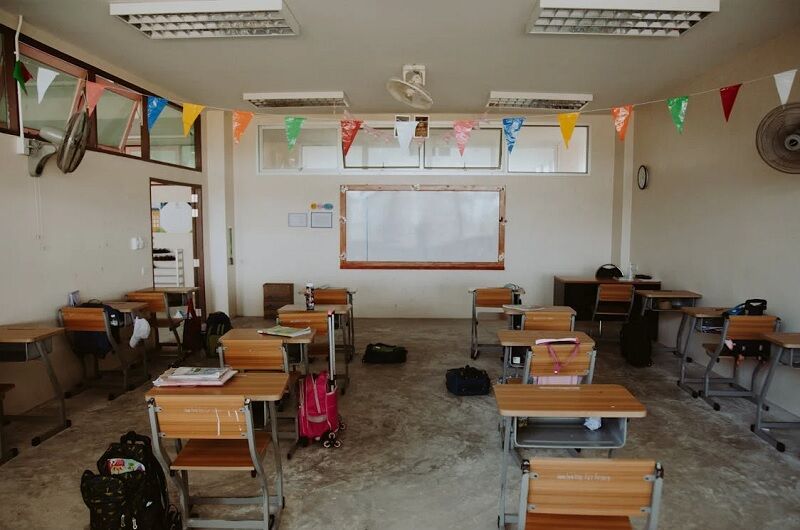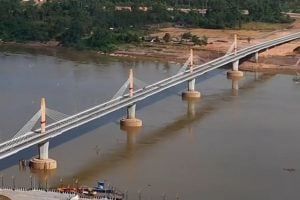Challenges of rural education in Thailand

Envision a circumstance where the payment of tuition is not carried out through monetary transactions but through the process of tree planting and participation in community service activities. This is the state of affairs in certain remote regions of Thailand, where educators, imbued with a deep sense of commitment, are endeavouring to deliver high-quality education despite numerous hindrances.
The gravity of the situation is felt with maximum intensity in Thailand’s northeastern areas where there exists an acute deficiency of qualified educators. The students in this locality confront staunch difficulties in their quest to acquire knowledge, specifically in disciplines such as science and mathematics, due to a pronounced lack of specialized teaching professionals.
Furthermore, the challenges are not limited to the dearth of teaching professionals only. Comparatively, to their international counterparts, Thai secondary schools contend with the paucity of educational resources and proper physical infrastructure. This article is an attempt to throw light on these intricate issues, emphasize the necessity for extended support, and thereby suggest mitigation strategies for the enhancement of rural education in Thailand.
Socio-economic background
Understanding the socio-economic background acts as a foundation when uncovering the challenges of rural education in Thailand.
Rural vs urban divide
The performance gap between students from rural and urban areas in Thailand appears to mirror the socio-economic disparity. It’s noted that factors such as an overall lack of access to quality educational resources and broadband internet, especially in economically backward regions, widen this divide. Predominantly, students from urban sectors of South Korea or Singapore exhibit higher test scores in subjects like Reading and Science, compared to their rural counterparts in Indonesia, Malaysia, Thailand, or Vietnam. Accounting for factors like school-specific differences, Vietnamese students perform on the same level. Curtailing these socio-economic variations could potentially reward Vietnam, in particular, with a significant leap in PISA programme for international student assessment scores.
Impact of poverty on education
Unsurprisingly, poverty brings about an adverse effect on education quality. According to a report, Thailand experiences disparities in the distribution of quality learning assets across regions and socio-economic backgrounds. This inequality in resources directly impacts areas hit by poverty, thereby widening the education gap. Concerns rise from various corners, including students and parents alike, calling for a systemic shift to cater to the emerging educational demands. This call underscores the urgent emphasis on holistic development, critical thinking, and practical skill development.
Quality of education

Amid the challenges of rural education in Thailand, two crucial factors at play are curriculum relevance and professionalism in teaching. Let’s explore these two challenges that continue to obstruct the path towards achieving a standardised quality of education across Thailand.
Curriculum relevance and adaptation
Identifying the pressing needs of the education system in Thailand, outdated curriculum stands as a hurdle to the quality of education. Amid the evolving needs of the 21st century, curriculum reforms become an inevitable solution. However, there is a need for these reforms to be attuned to both urban and rural dynamics, specifically designed to cater to the unique socio-cultural context of rural Thai classrooms. The introduction of state-of-the-art instructional materials alongside modern teaching methods could trigger fresh waves of change. Aiding this shift towards a student-centred approach implies developing the critical thinking skills of Thai students by breaking free from the traditional rote learning techniques.
Teacher training and quality
Delving deeper into the challenges of rural education in Thailand, a significant offshoot is the necessity for comprehensive teacher training programs. Teachers, being the bearers of quality education, directly impact learning outcomes. The lack of teacher training, especially in rural areas, becomes a roadblock to ensuring quality education. Coupled with this, professionals in the education sector often wrestle with a lack of opportunities for continuous development. By amplifying the access and delivery of regular professional development opportunities, teachers can stay abreast of the latest pedagogical techniques and technologies. However, addressing these challenges not only fosters the personal and professional growth of teachers but also plays a crucial role in student development, thereby enhancing the overall quality of education. Remember, in the path to progress, leaving no teacher behind becomes as crucial as leaving no child behind.
Access and infrastructure challenges

Improving rural education in Thailand involves confronting several access and infrastructure challenges. The impact of these factors extends beyond the physical confines of the school environment, affecting the delivery of education and student performance.
Transportation and logistical issues
You’ll find the commuting difficulties that children and teachers face rank highly among the challenges of Rural Education in Thailand. Factors such as long travel distances, unsafe roads, and lack of reliable transportation often deter students from attending school regularly, leading to high dropout rates.
Rural schools struggle due to logistical constraints related to the delivery of educational resources. Delivery trucks often grapple with poor road conditions, limiting the frequency and reliability of resource deliveries. A World Bank report points out the disparities in allocation and inefficiencies of investments across schools, with disadvantaged, including rural, schools receiving lower investments in key financial, human, and digital learning resources.
Technology and connectivity
Connectivity issues add another layer of complexity to these challenges. Despite the increasing adoption of digital learning tools in urban areas, rural schools are often left behind due to a lack of internet access and inadequate technological infrastructure. Notably, a challenge materialises in the form of distance learning, as noted by English teacher Panita Budkhod. Rural schools have a limited number of small, outdated televisions, making it difficult for all students to participate effectively in lessons.
Cultural and language barriers
Examining the struggles of rural education in Thailand, it becomes apparent that cultural and language barriers significantly affect students’ academic achievements and overall learning experiences. Two particular concern areas emerge – the alignment between local languages and national curriculum, and the integration of cultural practices into the educational framework.
Local languages vs national curriculum
Thailand possesses rich linguistic diversity, especially within its rural domains. Nonetheless, the national curriculum largely adopts the standard Thai language as the main medium of instruction. Such a disconnect can cause misunderstandings for rural students, mainly those whose mother tongue differs from the standard Thai used in textbooks and lectures. To counter these challenges in rural education in Thailand, there’s a strategy of incorporating local language instruction, enhancing students’ comprehension and engagement with educational content. By building bridges between local languages and Thailand’s national curriculum, schools may nurture a more inclusive learning environment that respects and empowers the country’s multilingual youth.
Government policies and initiatives

The Government of Thailand is making noteworthy advancements in tackling rural education challenges, employing various policies, initiatives and resource coordination specifically designed to enhance learning outcomes and elevate the standard of education in isolated areas. Allow us to explore these particular aspects in detail.
Funding distribution
The distribution of funding plays a significant role in reinforcing education in rural areas of Thailand. The Office of Basic Education Commission reveals that due to the Ministry of Education’s strategic initiatives, over 1000 small rural schools have merged. This merger’s aim primarily lies in driving quality education, reducing management costs, conserving human resources, and redirecting the saved funds towards enhancing infrastructure and inculcating necessary technology in schools. Unfortunately, despite these efforts, a lack of resources persists, primarily due to budget constraints.
Policy implementation at the rural level
Policy implementation at rural levels faces certain hurdles. One instance revolves around distance learning. As voiced by Panita Budkhod, a dedicated English teacher, distance learning proves exceptionally convenient in these remote schools. Yet, with only three small-screen TVs available, students in back rows struggle to view the screens, suggesting a distinct resource shortfall. The final aim includes engendering confidence in pupils, and further strengthening their English communication skills, but these resource limitations necessitate innovative solutions.
Following a comprehensive analysis of the landscape of rural education in Thailand, a significant disparity in quality has been observed between rural and urban academic institutions. Furthermore, socio-economic variables exacerbate the difference in performance. Positively, there have been instances of novel strategies such as tuition payment facilitated by tree planting initiatives and community services. However, these solutions fall short of completely addressing the issue at hand. There is an urgent requirement for reforms that cater to the distinct realities of rural education alongside policies that mitigate transpiration and connectivity constraints. Given appropriate attention and financial support, surmounting this educational divide is inevitable. The advancement of rural education within Thailand is contingent on this, thereby presenting a necessity for joint endeavours.
Want to know more, How much do international schools in Thailand actually cost. As a parent, you naturally want what’s best for your child, and for many, that might mean sending them to an international school. But the problem is, how much does an international school cost in Thailand? The price tags are different everywhere. What’s the big number for tuition? And what about extra costs that pop up when you least expect them? Finding all of this out can feel like a lot to take on, but having a clear picture is crucial before settling on a school.
Latest Thailand News
Follow The Thaiger on Google News:


























